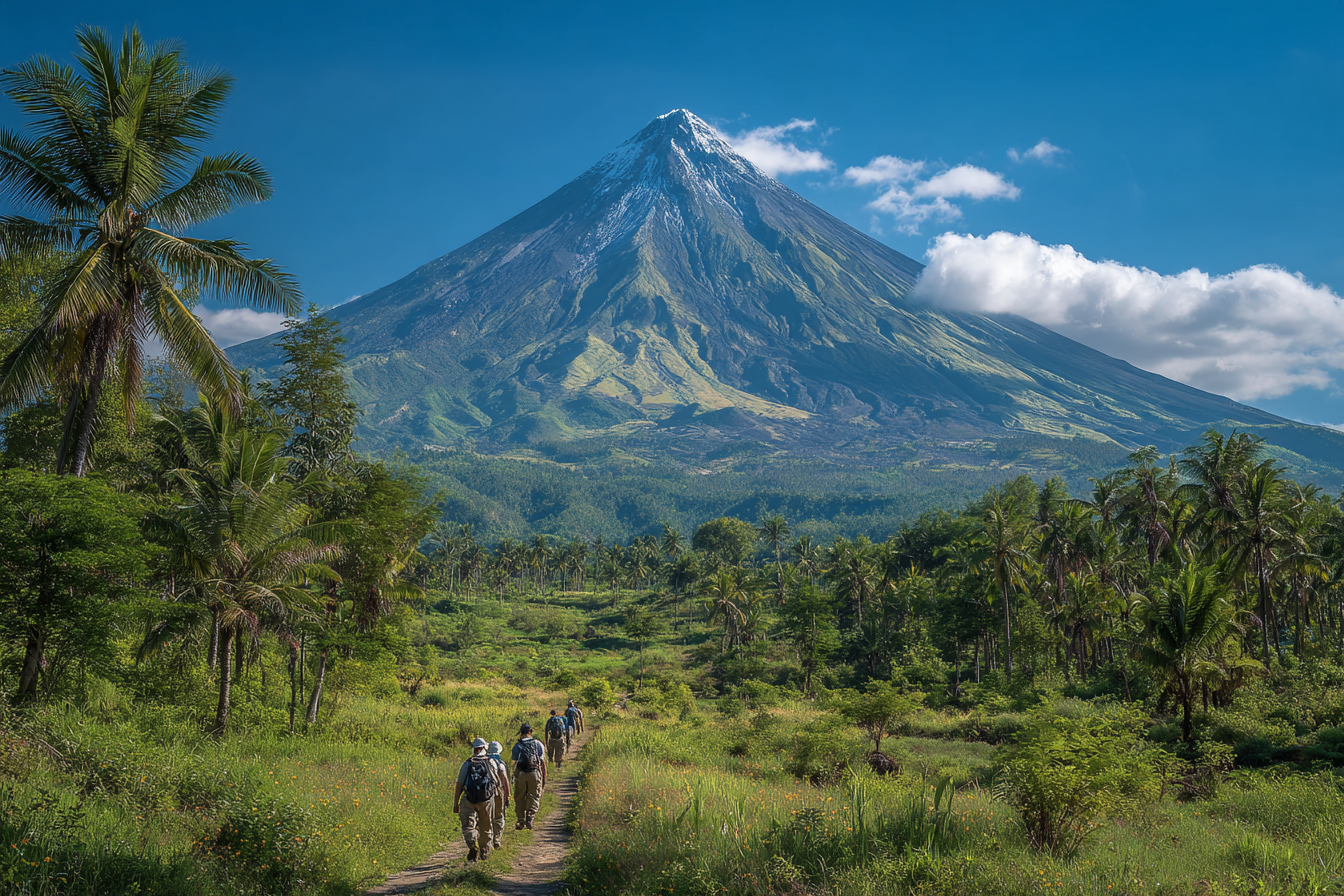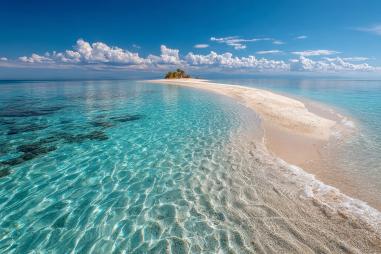Mount Mayon, renowned for its almost-perfect conical shape, is one of the most iconic natural landmarks in the Philippines. Beyond its striking beauty as an active volcano, Mount Mayon offers travelers a unique opportunity to engage in eco-tourism — a way to appreciate the environment responsibly while supporting local conservation efforts. By exploring Mount Mayon’s rich biodiversity, participating in sustainable tours, and adhering to environmentally friendly practices, visitors play a vital role in preserving this natural wonder for generations to come.
The Importance of Eco-Tourism at Mount Mayon
Eco-tourism is more than just visiting natural places; it’s about fostering a deeper connection with the environment while protecting it. For Mount Mayon, this approach is especially critical. The volcano’s delicate ecosystem is home to various endemic species, lush forests, and unique geothermal features that are sensitive to human activity.
Moreover, Mount Mayon is situated near local communities that rely heavily on the natural resources surrounding the volcano. Unregulated tourism can lead to habitat degradation, pollution, and a strain on local infrastructures. Embracing eco-tourism ensures that travelers visit with a mindset of stewardship rather than mere observation, helping to safeguard the area’s ecological balance.
Eco-tourism also promotes cultural respect. Visitors can learn about the indigenous Ako Bicolandia people and their deep spiritual relationship with Mount Mayon, fostering awareness and respect for local customs and traditions. By prioritizing sustainability, eco-tourism turns every visit into an opportunity for education and conservation.
Eco-Tour Options and Activities
When visiting Mount Mayon, there are numerous eco-friendly activities to choose from that let you experience its beauty while minimizing environmental impact. Here are some popular options:
- Guided Nature Treks: Join certified local guides on hikes through the various trails around Mount Mayon. These treks showcase the region’s vibrant flora and fauna, volcanic rock formations, and spectacular views, all while emphasizing Leave No Trace principles.
- Bird Watching Tours: The forests surrounding Mount Mayon are home to many bird species, including some that are endemic and critically endangered. Bird watching excursions provide an immersive experience for nature lovers while contributing to citizen science through bird counts and monitoring.
- Volcanology Educational Tours: Learn about Mayon’s volcanic history and activity through interactive sessions and visits to the Volcano Monitoring Station. These tours highlight the geological significance of the region and the importance of ongoing scientific study.
- Community-Based Homestays: Support local families by staying in eco-friendly homestays. These accommodations prioritize sustainable practices like solar energy, waste reduction, and organic farming, offering visitors a truly authentic experience.
- Photography Workshops: Capture Mayon’s breathtaking landscapes while learning about ethical photography that respects wildlife habitats and natural settings.
Conservation Projects and Visitor Involvement
Mount Mayon benefits from several ongoing conservation initiatives that aim to protect its unique environment and cultural heritage. Many of these projects actively involve visitors, providing opportunities to contribute meaningfully during their stay.
- Reforestation Efforts: Volunteers, including tourists, often participate in tree planting programs to restore denuded areas affected by volcanic eruptions and human activity. These efforts help stabilize soil, improve biodiversity, and mitigate erosion.
- Wildlife Monitoring: Some local eco-tourism operators partner with scientists to conduct wildlife surveys and habitat assessments. Visitors can assist in monitoring efforts by reporting sightings and helping track species distribution through citizen science apps.
- Clean-Up Drives: Occasionally organized by local governments and NGOs, these programs encourage community members and travelers to join in cleaning trails, campsites, and riverbanks around Mount Mayon.
- Cultural Preservation Workshops: Tourists can take part in workshops that teach indigenous crafts, traditional agriculture, and oral histories, fostering a deeper appreciation for the region’s natural and cultural wealth.
Guidelines for Responsible Travel
To ensure your trip to Mount Mayon supports eco-tourism goals, it’s essential to follow responsible travel practices. Here are key guidelines to keep in mind:
- Respect Trail Boundaries: Stick to designated paths and avoid venturing into restricted zones to protect fragile vegetation and reduce risks from volcanic activity.
- Minimize Waste: Carry reusable containers and bags, avoid single-use plastics, and properly dispose of all trash. Participate in recycling programs where available.
- Use Eco-Friendly Products: Opt for biodegradable soap and sunscreen to reduce chemical impacts on water sources and wildlife.
- Maintain Quiet and Distance: Avoid loud noises and keep a safe distance from wildlife to minimize disturbance and observe natural behaviors.
- Follow Local Regulations: Pay attention to instructions from local authorities and guides, respecting seasonal restrictions and safety warnings.
- Support Local Businesses: Choose accommodations, eateries, and tour operators that demonstrate sustainable practices and contribute to community welfare.
Benefits to Local Communities and Environment
Eco-tourism at Mount Mayon directly benefits both the environment and the surrounding communities. Financially, revenue generated from sustainable tourism supports infrastructure improvements, conservation projects, and community development programs.
Socially, it encourages cultural exchange and pride, empowering local residents to preserve their heritage and advocate for environmental stewardship. Eco-tourism jobs and training initiatives promote alternative livelihoods that reduce pressure on natural resources, helping to curb harmful activities such as illegal logging and unregulated farming.
Environmentally, sustainable visitor practices decrease pollution, habitat destruction, and carbon footprints. The increased awareness that eco-tourism fosters also helps generate broader support for conservation policies and disaster preparedness related to Mayon’s volcanic activity.
Tips for Minimizing Your Footprint
Every traveler plays a part in preserving Mount Mayon’s pristine environment. Here are simple but impactful tips to minimize your ecological footprint:
- Travel in small groups to reduce crowding and resource consumption.
- Choose public transportation, biking, or carpool options when commuting around the area.
- Bring reusable water bottles and refill them at safe stations instead of buying bottled water.
- Pack light to lower transportation emissions and reduce waste.
- Learn a few local phrases to engage respectfully with residents and show cultural appreciation.
- Document your experiences in ways that inspire conservation, such as sharing photographs and stories that highlight eco-friendly initiatives.
Mount Mayon beautifully illustrates how natural wonders can be enjoyed while preserving their integrity. By embracing eco-tourism practices and supporting sustainable initiatives, visitors ensure that this magnificent volcano remains a source of inspiration and livelihood for many years. When you explore Mount Mayon responsibly, you become part of a caring community dedicated to protecting nature and culture alike—allowing future generations to delight in its majesty just as you have.







